
Dr. Robyn and I were reminded on a recent hike of the importance of wide toe box footwear and natural toe splay for foot comfort and injury prevention. The combination of Correct Toes toe spacers and men's and women's wide toe box footwear is extremely helpful in preventing the foot and knee problems that plague so many trekkers, especially on long hikes and descents, and it saved us from considerable agony during our own 8-hour hike in the mountains.
Conventional hiking boots, which possess tapering toe boxes (along with other problematic design features), force your toes into a wedge position and encourage the repetitive jamming of your toes into the end of your boot's toe box, which can lead to sore feet and toes and excessive strain on the muscles, tendons, and ligaments acting on or supporting your knees (not to mention toe deformities, over time).
Before we began wearing minimalist shoes that accommodate toe spacers, both Dr. Robyn and I suffered from terrible lateral knee pain during long hikes, especially during the descents. Once we switched to proper (i.e., flat, wide, and flexible) footwear and repositioned our toes in the way that nature intended, we experienced no further pain or discomfort while hiking or running. Ever.
Why Wide Toe Boxes Matter for Hiking

Four distinct benefits come from using wide toe box footwear for hiking:
-
Improved Comfort: Your feet and toes will feel significantly more comfortable in wide toe box footwear during a long day of hiking. Your feet will most likely still feel tired at the end of the day, but it's unlikely that you'll experience any discomfort during your hike. You can boost your foot comfort even further by using other helpful natural footgear, such as Correct Toes, Injinji toe socks, and Pedag metatarsal pads. This is an excellent combination of products for experiencing maximum foot comfort while hiking.
-
Improved Toe Alignment: Wide toe box shoes allow your toes to splay. When you wear wide toe box shoes and participate in weight-bearing activity, such as hiking, you're encouraging a realignment of your toes to the position that nature intended; that is, in line with their corresponding metatarsal bones. Wearing wide toe box shoes while hiking is an active way to rehabilitate your feet and toes and restore your toes to their true anatomical shape and alignment.
-
Reduced Likelihood of Injuries: Most hikers have experienced at least one foot or lower body musculoskeletal problem during the course of a hike. Many hikers believe that the problem lies in their conditioning, or that the pain they're experiencing is the result of a past, unresolved musculoskeletal problem. This may be true in some instances, but it's also true that conventional hiking boots themselves are the source of significant pain and discomfort. Wearing wide toe box footwear while hiking will help you avoid debilitating lower leg problems such as knee pain, ingrown toenails, neuromas, and shin splints.
-
Enhanced Balance: When you wear wide toe box shoes while hiking, it's likely that you'll experience an improved sense of balance. This is due to the wider support platform associated with the splayed toe configuration. Conventional hiking boots force your toes together into a wedge configuration, effectively reducing the surface area of the forefoot contacting the ground with each footfall. This, along with other features of conventional hiking boots that destabilize your main foot arch (such as heel elevation and toe spring), has a direct effect on the frequency of traumatic ankle injuries, especially ankle sprains. For more information about this topic, please read our article on how minimalist shoes can help prevent ankle sprains.
Consider using wide toe box boots, shoes, or sandals (i.e., footwear that's widest at the ends of your toes, not the ball of your foot) for your next day-hike or multi-day trek. But first, please do check out our article on how to safely transition from conventional shoes to minimalist or minimalist-like footwear. You might also enjoy our article entitled What Makes for a Great Hiking Boot?
What Are Some Examples of Wide Toe Box (& Foot-Healthy) Hiking Footwear?

Frequent visitors to the Natural Footgear site can probably surmise that we don’t support the use of conventional hiking boots, as most hiking boots incorporate a number of problematic design elements and (in our opinion) injure the foot more often than assist it. We do, however, have a few suggestions for wide toe box hiking footwear that allows your toes to splay and your feet and ankles to support themselves. And here they are:
Lems Boulder Boots
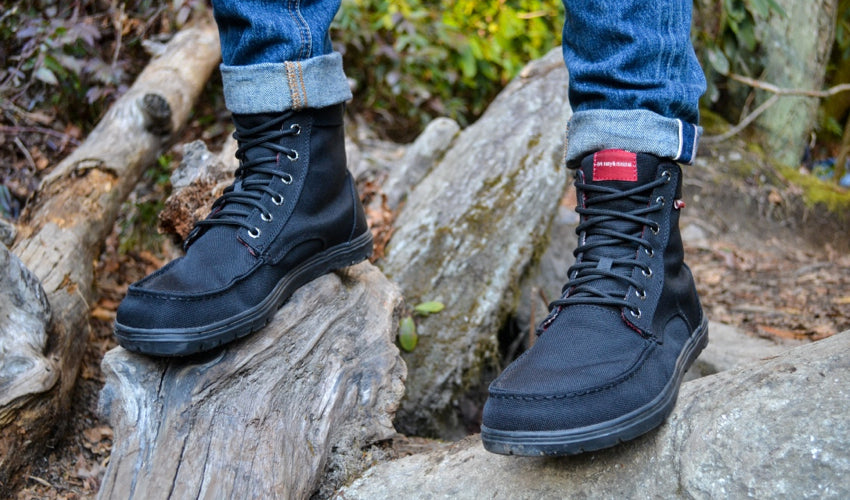
The Lems Boulder Boot is a minimalist boot, which means that it covers your foot and ankle but stays out of the way of your foot, allowing your foot to look and function as nature intended. This boot has a sufficiently grippy sole, and many people use the Boulder Boot as their principle trail running shoe or hiking boot. There are numerous versions of the Boulder Boot available, including vegan and waterproof options. In early 2014, Dr. Robyn and I hiked the entire Annapurna Circuit in Nepal (a 3-week trek over all types of terrain and through all types of weather conditions) in our Lems Boulder Boots without issue. In fact, it was a wonderful experience. Consider combining the Lems Boulder Boot with a winter traction aid if you’ll be using the boots in snowy or icy conditions.
SHOP LEMS BOULDER BOOTS
Xero DayLite Hiker Boots

The Xero DayLite Hiker is a comfortable and reliable trail companion that will protect your foot yet still allow it to sense the ground and other trail features. This flat-soled, wide toe box minimalist hiking boot includes a durable, abrasion-resistant mesh upper and a helpful Tough Tech toe bumper. The sole of the DayLite Hiker incorporates a dual-direction chevron tread pattern, which affords great grip on a variety of surfaces. This boot also includes huarache-inspired heel straps and adjustable instep straps so that you can find the perfect tension. The DayLite Hiker is one of my favorite boots for hikes in the nearby Blue Ridge Mountains.
SHOP XERO DAYLITE HIKER BOOTS
Lems Primal Pursuit Shoes

The Lems Primal Pursuit is a sporty zero drop, wide toe box transitional shoe that also works great for all sorts of outdoor athletic endeavors, including backcountry excursions. Built with both foot comfort and health in mind, the versatile and Correct Toes compatible Primal Pursuit is equally great as a go-to around-town shoe or as a dependable trail sneaker. Breathable and lightweight (each Lems Primal Pursuit shoe weighs about 10.5 oz.), this foot-forward trainer incorporates a grippy Trail Traction outsole with recessed grooves and 3.5 mm singular lugs. It also includes a 100 percent moisture-wicking polyester lining and an air mesh upper to help keep your feet cool and dry.
SHOP LEMS PRIMAL PURSUIT SHOES
Xero TerraFlex Shoes

The Xero TerraFlex is a minimalist hiking shoe that lets you feel the ground and experience the true joy of natural foot and body movement. It’s a high-performance, zero drop athletic shoe that enhances proprioception and enables natural toe splay, and it provides an excellent alternative to the excessive weight and sole rigidity of conventional hiking footwear. The TerraFlex's 6 mm flexible sole allows your foot to move the way nature intended and become strong on its own, and its lightweight, huarache-inspired design is unobtrusive and provides your foot with plenty of freedom to function at its best.
SHOP XERO TERRAFLEX SHOES
Ahinsa Winter Barefoot Boots

The Ahinsa Winter Barefoot is an all-weather minimalist boot that is built using high-quality vegan materials. This lightweight hiking boot, designed by physical therapists in the Czech Republic with foot health in mind, has one of the widest toe boxes of any trail shoe or boot. The completely flat and flexible sole provides sufficient foot protection but largely stays out of the way of your foot, allowing you to develop strong and resilient feet, toes, and arches. The Ahinsa Winter Barefoot can easily double as an around-town boot, which reflects its great versatility.
SHOP AHINSA WINTER BAREFOOT BOOTS
Xero Prio Shoes

The Xero Prio is a well-rounded athletic shoe that you can use for a variety of active outdoor pursuits, including hiking, trail running, and parkour. The relatively thin sole (5.5 mm) and lightweight nature of this flat, wide, and flexible minimalist shoe offers you a true barefoot feel, which is ideal when navigating trail features such as roots, rocks, and other tricky debris. The Prio incorporates a zero drop platform and a toe box that's wide enough to accommodate Correct Toes toe spacers, which helps give you the most stable possible foundation.
SHOP XERO PRIO SHOES
Luna Mono Winged Edition Sandals
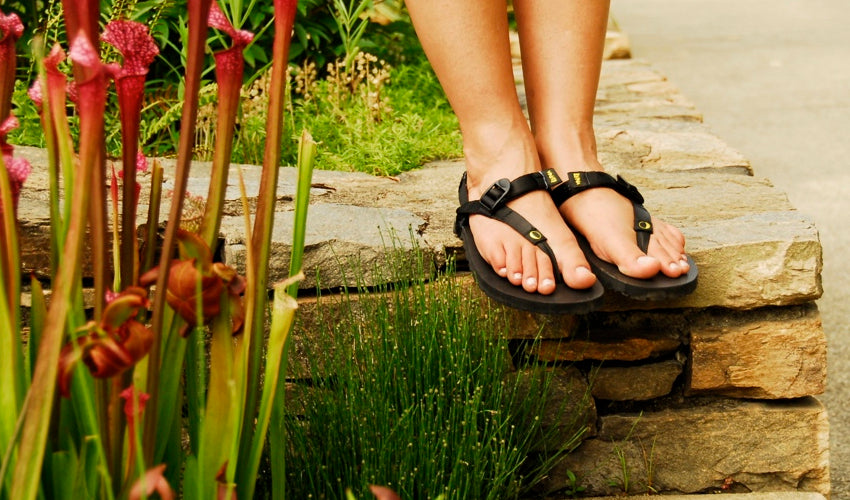
The Luna Mono Winged Edition is a minimalist running and walking sandal similar to the huaraches used by the Tarahumara of the Copper Canyons of Mexico (and similar to the style of shoes I saw many mountain porters wearing in Nepal). These “hiking boots” have a semi-lugged Vibram sole, and they work well on a variety of terrain. They are primarily warmer weather footwear unless you use them with a thick toe sock or other foot covering during the cooler months (which a lot of people do). Exercise caution and avoid using footwear that exposes your skin to the elements in cold weather conditions.
SHOP LUNA MONO SANDALS
If you have other favorites, we'd love to hear about them! Please leave a comment below or send us a message via our contact form. We're always looking for great new foot-healthy hiking footwear. Happy trails!

WANT TO IMPROVE YOUR FOOT HEALTH?
Let the team at Natural Footgear help you! Subscribe to our newsletter for the latest offers and helpful info, and sign up for our FREE email courses on various topics and foot health conditions.
Sign Up →
Want to Improve Your Foot Health?
We are here to help you every step of the way. Get our newsletter for the latest offers and helpful info, and sign up for our FREE email courses on various topics and conditions, including bunions, hammertoes, neuromas, plantar fasciosis, shin splints, ingrown toenails, and more.
Sign Up →
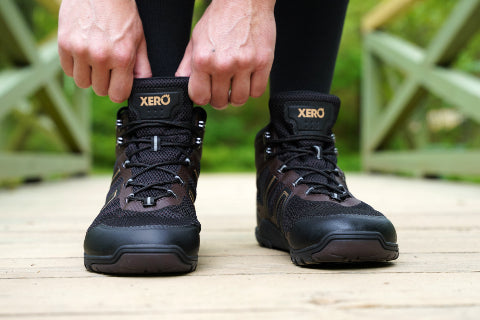 Hiking—in all its many manifestations—is a hugely popular outdoor pastime, and almost everyone seems to have an opinion about what kind of footwear is best for this beloved activity. This article takes a closer look at hiking boots and discusses some of the most common misconceptions about this important type of footwear. We debunk the biggest hiking boot myths and examine why conventional hiking boots cause foot problems in so...
Read more
Hiking—in all its many manifestations—is a hugely popular outdoor pastime, and almost everyone seems to have an opinion about what kind of footwear is best for this beloved activity. This article takes a closer look at hiking boots and discusses some of the most common misconceptions about this important type of footwear. We debunk the biggest hiking boot myths and examine why conventional hiking boots cause foot problems in so...
Read more












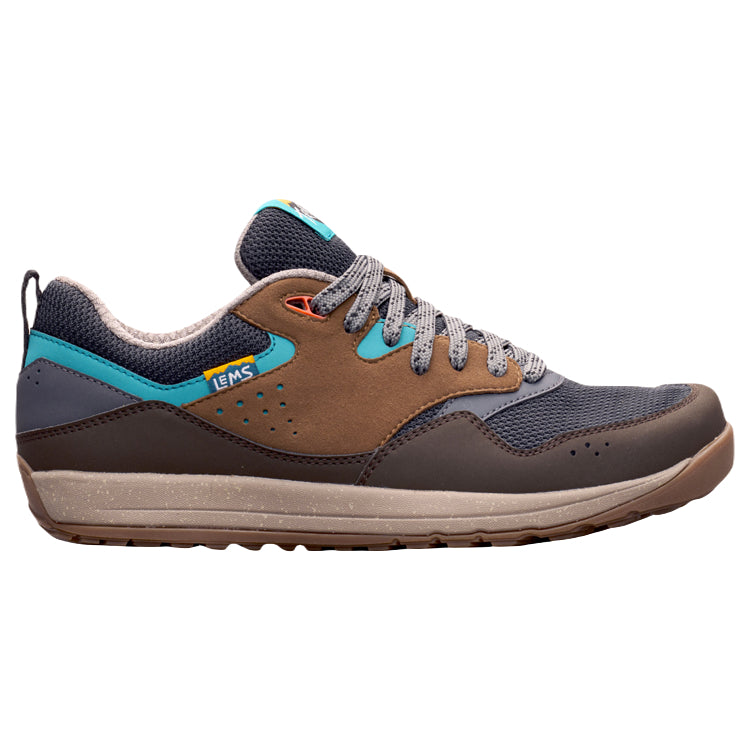
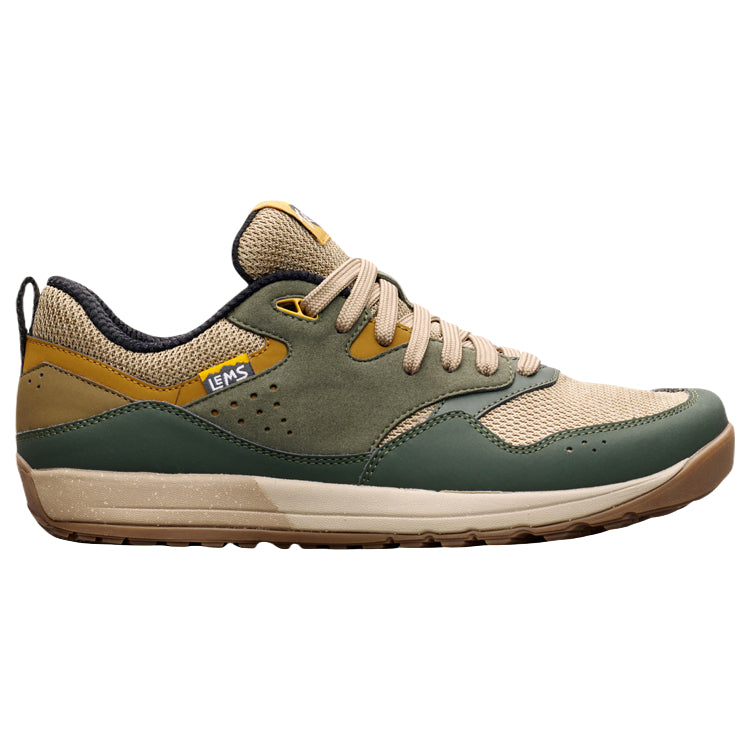
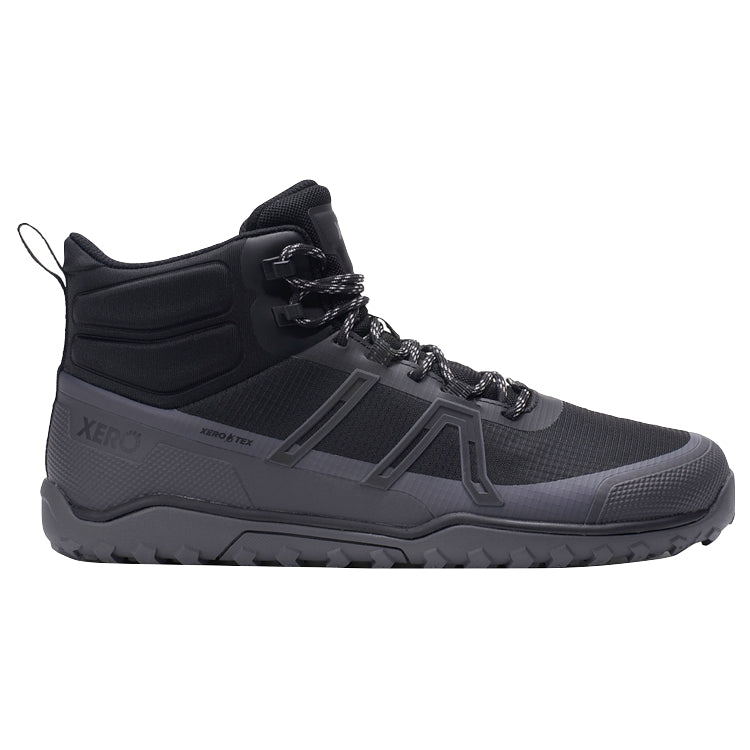
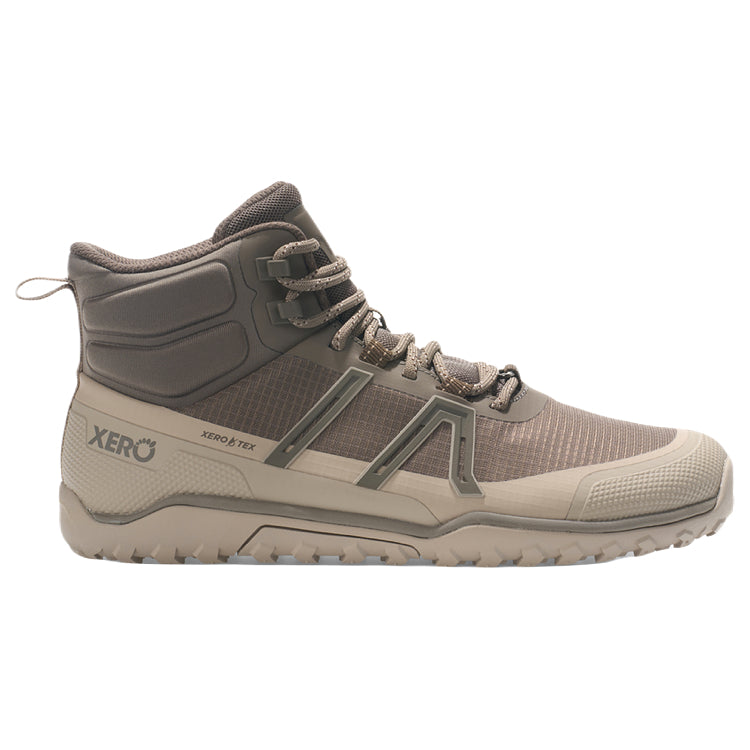
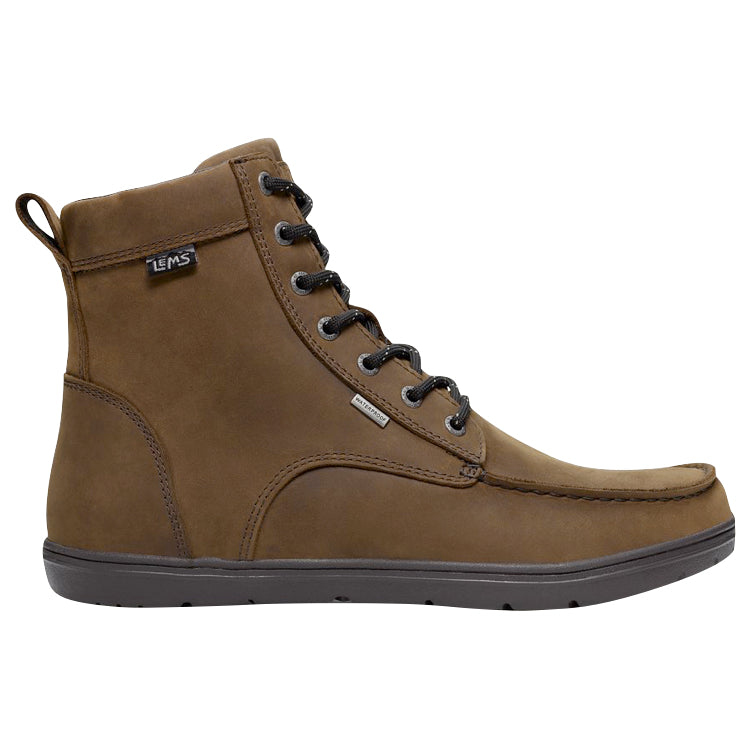
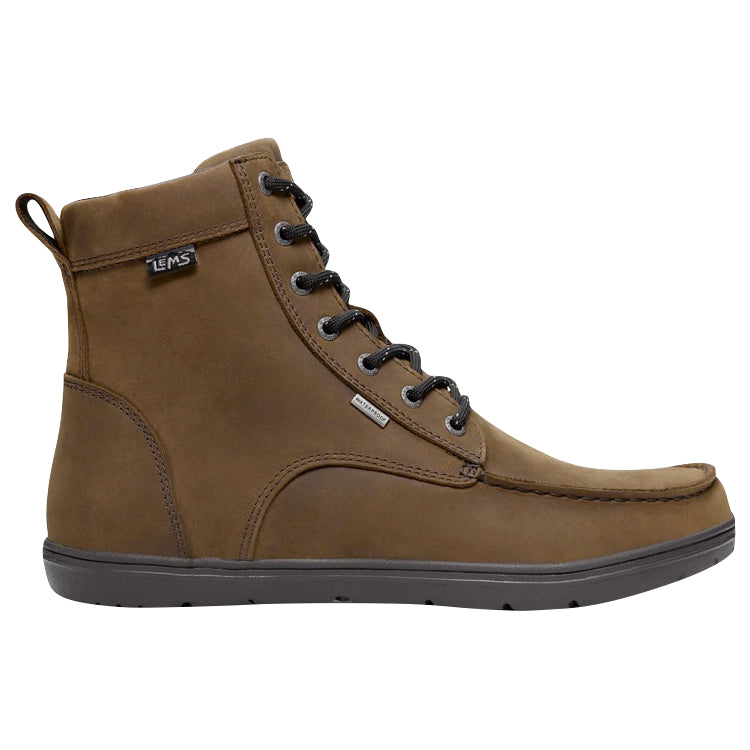
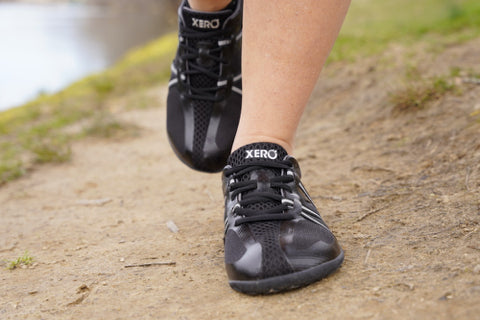

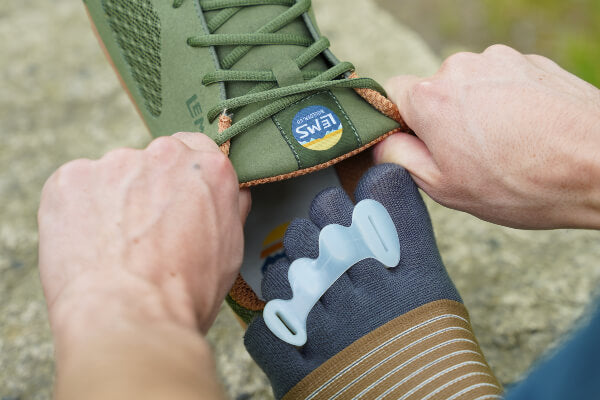
Hi,
I am hoping I have come across a lifesaver in terms of my feet, or I should say for my one foot. For years I ran and did not know why my third and fourth toes would go numb; I just kept running. Fast forward to the past 3 years of my hiking almost weekly. I have high arches, and I believe my one foot has a Morton’s neuroma, or at least the symptoms of it. I have tried a variety of hiking shoes, even ones (Keen) with a wide toe box, and it did nothing. Do you have hiking shoes to compensate for my high arches and narrow feet? Please let me know.
Hi, Tracy,
Thank you for your comment.
We have enjoyed using the Lems Boulder Boot for hiking. It’s got a fairly expansile upper, which is good news for folks with taller arches. You can check out our Lems Boulder Boot review here:
www.naturalfootgear.com/blogs/product-info/17922536-lems-boulder-boots-review
In terms of neuromas, we have found, in our experience, that a combination of Correct Toes, metatarsal pads, and foot-healthy footwear can help relieve or reduce the pinch and stretch forces that trigger neuromas in the first place.
Here are some resources that I think you may find helpful:
Neuromas & Natural Foot Health:
www.naturalfootgear.com/blogs/education/17888880-neuromas-natural-foot-health
What Makes for a Great Hiking Boot?:
www.naturalfootgear.com/blogs/education/78033413-what-makes-for-a-great-hiking-boot
Benefits of Wide Toe Boxes for Hiking:
www.naturalfootgear.com/blogs/education/17856304-benefits-of-wide-toe-boxes-for-hiking
Neuromas: Conventional vs. Natural Approaches:
www.naturalfootgear.com/blogs/education/17888868-neuromas-conventional-vs-natural-approaches
I hope this info helps!
Kind regards,
Laura Trentman
Hello,
The Lems Boulder Boot is exactly what I’m looking for. Do you think they would hold up well for an Appalachian Trail thru-hike? As I read hikers journals I’m understanding that it’s a rainy trail and the weather conditions go from very cold with snow to humid heat. Lems Primal 2s fit like heaven on my feet and I would love to continue to support Lems.
So … thoughts on the Boulder Boot for an AT thru-hike? Thank you for this article! :-)
Hi, Laura,
Thank you for your comment and kind words! I think the Lems Boulder Boot would be a great choice for an AT thru-hike. I’ve personally used them in Nepal, on the Annapurna Circuit Trek, in a variety of weather conditions. They can be a little slippery on snow, but an aftermarket solution such as this could be quite helpful for traction:
www.duenorthproducts.com/
The boots themselves are water-resistant, and you can use aftermarket products, such as Nikwax, for additional waterproofing. The boots are lightweight, work great with a variety of beneficial natural footgear, and pack really easily. All in all, a solid choice, in my opinion.
I hope this info helps!
Kind regards,
Marty Hughes, DC
I wear size 11 wide shoes and have a hard time finding anything other than completely flat sandals that are comfortable. Even typical wide shoes tend to pinch and be uncomfortable after a couple hours. I prefer to be barefoot and let my toes splay as they may! Even when hitting up all four Disney parks in Orlando in one day, I do better with flat sandals than any type of shoe. The only problem I run into is that my heels tend to ache at the end of the day. I am taking a 2-week sojourn in New Zealand with a lot of day-hiking planned and I (unfortunately) can’t exactly go barefoot. What type of shoes or boots would you recommend?
Hi, Rebekah,
Thank you for your comment! I’m excited to hear about your trip to New Zealand. How fantastic!
In terms of that aching heel problem you mentioned, have you considered using something like a Tuli’s heel cup to help prevent or reduce the discomfort? It can be a pretty cost-effective solution to that problem for some folks:
www.naturalfootgear.com/collections/foot-pads/products/tulis-heel-cups
In our experience, we’ve found the following footwear to be great for walking or day-hiking:
Luna Mono Sandals:
www.naturalfootgear.com/pages/luna-sandals
Lems Primal 2 Shoe:
www.naturalfootgear.com/pages/lems-primal-2-shoes
Lems Boulder Boot:
www.naturalfootgear.com/pages/lems-boulder-boots
I hope this info helps! Enjoy your trip!
Kind regards,
Marty Hughes, DC
I’ve always preferred to be barefoot inside and outside, mostly because I have wide toes and all shoes crush them. Since pregnancy, I’ve had awful issues with plantar fasciitis and have been forcing myself to wear shoes that are uncomfortable for my toes. Will these shoes be comfortable with plantar fasciitis? I’m not well informed about the minimalist shoe philosophy—does that mean there is no padding or arch support or anything?
Hi, Emily,
Thank you for your comment and questions. Right off the bat, you may appreciate this video, which provides some background info about plantar fascia pain and what’s actually happening in those tissues when pain or discomfort is experienced:
www.naturalfootgear.com/blogs/education/17889080-plantar-fasciitis-or-fasciosis
Also, this video discusses some of the natural approaches to plantar fasciosis, including the selection and use of footwear that allows the toes to splay—the key to addressing most cases of plantar fascia pain:
www.naturalfootgear.com/blogs/education/17889116-plantar-fasciosis-conventional-vs-natural-approaches
Check out this page to learn more about our definition of a foot-healthy shoe:
www.naturalfootgear.com/blogs/education/17878244-definition-of-a-healthy-shoe
Most minimalist shoes possess at least some of the design characteristics we consider foot-healthy, but most do not possess all the features, so it pays to be aware of this when shopping for minimalist footwear. In our view, a truly foot-healthy shoe offers minimal yet sufficient protection for the foot and allows the foot to benefit from natural arch support. More about natural arch support here:
www.naturalfootgear.com/blogs/education/17888744-natural-arch-support
I hope you find this info helpful!
All best,
Marty Hughes, DC
I’ve been looking for Wellington boots that have a wide enough toe box to accommodate Correct Toes toe spacers. Have you happened across anything that matches the above criteria? Thanks!
Hi, Sean,
Great question! Unfortunately, I’m not currently aware of any Wellington-style boots that will work well with Correct Toes. You might consider checking out the Crocs product lineup to see if something might meet your needs. That’s my best advice at this point in time.
Kind regards,
Marty Hughes, DC
My husband and I are 6 months away from a Japanese Kumano Kodo Pilgrim Trail walk. I have trialed wide toe box hiking shoes with no success for my very wide feet with bunion/hammertoe problems […] I’m keen to try the Boulder Boots and probably some of the toe correctors too. Do I sound like a potential customer?
Greetings, Janet,
Thank you for your message! I really appreciate you reaching out to us with your question. First off, congratulations on your upcoming Kumano Kodo trek! That will be a fantastic adventure, and I wish you all the best with your endeavor. Second, I think you’re really wise to be considering your trekking footwear so carefully. Footwear can make all the difference between an enjoyable, life-changing experience and a major sufferfest!
My big question for you is the following: Were the wide toe box hiking shoes you previously used widest at the ends of the toes, or at the ball of the foot? Most footwear that is marketed as having a wide toe box includes ample width at the ball of the foot, yet it still tapers as it moves out toward the ends of the toes. We know that the widest part of the foot should be at the ends of the toes (www.naturalfootgear.com/pages/foot-anatomy-101), so any footwear that does not accommodate this natural, splayed-toe configuration is going to impact the foot and toes in a negative way.
Other design elements in conventional hiking footwear, such as heel elevation (www.naturalfootgear.com/blogs/education/17883872-heel-elevation) (which you can see depicted in the image of the hiking boots above), can also contribute to foot and toe problems, including bunions (www.naturalfootgear.com/blogs/education/17856628-bunions) and hammertoes (www.naturalfootgear.com/blogs/education/17883488-hammertoes). To learn more about bunions and hammertoes and how footwear can impact these problems, my best recommendation is to sign up for our free email courses on these (and other) topics (www.naturalfootgear.com/pages/newsletter-courses). To learn more about what makes for a great hiking boot, please visit this article:
www.naturalfootgear.com/blogs/education/78033413-what-makes-for-a-great-hiking-boot
You had mentioned the Boulder Boot (www.naturalfootgear.com/pages/lems-boulder-boots) and toe spacers (www.naturalfootgear.com/collections/toe-spacers/products/correct-toes) as two possible types of footgear to use on your trek. I can tell you that I have personally used these products (in combination with Injinji toe socks (www.naturalfootgear.com/collections/toe-socks)) to hike the Annapurna Circuit in Nepal—a 2-3-week trek. I found this to be an excellent combination of footgear and got through the entire trek without any blisters, foot pain, knee pain, etc. Of course, everyone is a bit different in terms of how they respond to natural footgear, so it pays to give yourself some time before the trek (several months at least, I’d say) to let your body adapt to this more minimalist-type boot.
Had it been available at the time, the one additional piece of footgear I would have brought with me for the trek is the Due North Traction Aids (www.naturalfootgear.com/collections/tools-accessories/products/due-north-everyday-pro-winter-traction-aids). The boots were a little slippy on the snowy passes, but otherwise, traction on the trail was not an issue. I don’t believe you’ll be encountering any snow on your trek, but just so you know. The traction aids are terrific, by the way.
So, all in all, I think your footgear choices for the trek are really solid. And I do think you are a potential candidate for natural footgear, as long as you still have some mobility in your toes (i.e., you can still manually move your big toe so that it’s in line with its corresponding metatarsal bone and straighten any hammertoes), can be patient with the process of natural foot rehabilitation, and have full sensation in your feet and toes.
If this approach (i.e., using natural footgear) is the way you plan to go, I do suggest starting with the gear as soon as you can to get acquainted with how everything feels and the adaptations that will occur in your feet and lower body. You may appreciate our article that discusses how best to transition to minimalist footwear if you do opt to go with the boots (www.naturalfootgear.com/blogs/education/17888528-how-to-transition-to-minimalist-shoes).
If you have any additional questions, please do let us know! We’re happy to help out however we can.
Kind regards,
Marty Hughes, DC
Hi there!
I’ve started hiking over the last couple of years. And I’m really struggling to find a shoe that works. My big toes are the longest toes and so I suffer from toe bang, making hikes a chore and dreaded. I have tried ankle boots as well to lock my ankle in and keep my feet from sliding forward. These just bruised my ankle and caused other pain. My shins and knees also hurt during and after hiking.
Will these shoes you’ve described help? Will a wide toe box help with toe bang? I’ve tried so many shoes and am getting desperate! Thank you!!
Hi Natasha. Thank you so much for your comment! In our experience, we’ve found that flat-soled footwear with ample room in the toe box helps quite a bit with the “toe bang” you’re experiencing. Conventional shoes and boots usually possess tapering toe boxes, as well as an elevated heel. These design characteristics cause your toes to be squeezed or wedged into the front of your shoes. In this foot and toe configuration, the repetitive impact experienced by your feet when walking long distances is amplified, so I’m not surprised to hear that you’re feeling discomfort.
Another simple item to help prevent the jamming of your toes into your shoes’ toe boxes is a tongue pad:
www.naturalfootgear.com/collections/foot-pads/products/tongue-pads
This little pad sits underneath the tongue of your shoe or boot and serves as a kind of “ankle bumper.”
If you need help with sizing for any of the models described in this article, be sure to check out the “sizing” tab on each individual shoe’s product page, as the sizing between brands and models usually differs a bit.
If you have further questions, please do let us know!
All best,
Andrew Potter
Greetings, Dr. Hughes,
I recently began the transition to healthier feet through the use of Correct Toes. My question is: How do I know what a “wide” shoe actually is? I have been in extra wide women’s shoes, and sometimes I’ve purchased men’s shoes due to my foot width, but nothing has ever been ideal. My foot width when weight-bearing is 4.5" across the ball. With Correct Toes on, my toe splay is about the same. So approximately how wide in inches (or cm) is a “wide” shoe?
I want to wear my Correct Toes in shoes to go out and about, and I plan to make the transition to zero drop shoes with wide toe boxes. Thank you for your obvious dedication to optimal foot health and for any clarity you can provide on the measurement problem.
Hi, Kathleen,
Thank you for your question. And thank you for your kind words! We’re happy to hear that you’ve started using Correct Toes.
“Wide” is a relative term when it comes to footwear. No two sets of feet are identical, and so a shoe that’s wide for one person may be narrow for another. In general, though, a wide shoe is one that does not constrict any part of your foot, especially the ball of your foot or your toes. Basically, the shoe should be a protective covering that lets your foot move in a completely unencumbered way. For most people, a shoe is wide enough if they can comfortably wear Correct Toes inside of it without feeling any pressure from the shoe’s toe box on the sides of the toes.
Another way to determine whether a shoe is sufficiently wide for your foot is to perform the Shoe Liner Test. This article contains more information (including video demonstrations) about how to perform this important footwear test:
www.naturalfootgear.com/blogs/education/17914692-shoe-liner-test-pronation-explained
I hope this information has been helpful. If you have any further questions, please do let us know. We’re happy to help!
Kind Regards,
Marty Hughes, DC
I just found a pair of Topo shoes, men’s, which has a wide toe box. Trying to decide now if they suit me, but it seems hopeful. What bliss!
Hi, Penelope,
Thank you for your comment. In our experience, we’ve found that certain models of Topo shoes (the zero drop ones) are a solid choice for a wide range of athletic activities.
Please do keep us posted on your experience with the Topos!
Kind Regards,
Andrew Potter
Do you have a recommendation for a wide toe box boot that would be appropriate for backpacking? The pack weight is about 35 lbs.
Hi, Mark,
Thank you for your question. We have several footwear suggestions for you in terms of hiking with a loaded pack.
The Lems Boulder Boot is our go-to boot for multi-day hiking and adventuring. The sole is malleable enough to give you optimal ground feel, but strong enough to put up with quite a bit of wear and tear on more technical trails. Many people have backpacked long distances in the Boulder Boot, finding it optimal for a wide-range of off-road conditions. You can read more about the Boulder Boot below:
www.naturalfootgear.com/collections/mens-lems-boulder-boots
Another couple of great boot options are the Ahinsa Trekking Boot and the Feelmax Kuuva 4 Boot.
Also, the Xero Prio (www.naturalfootgear.com/collections/mens-xero-shoes) is a more minimalist option, and the Luna Mono 2.0 (www.naturalfootgear.com/collections/mens-luna-sandals) works quite well in warmer conditions.
Happy trails!
Kind Regards,
Andrew Potter